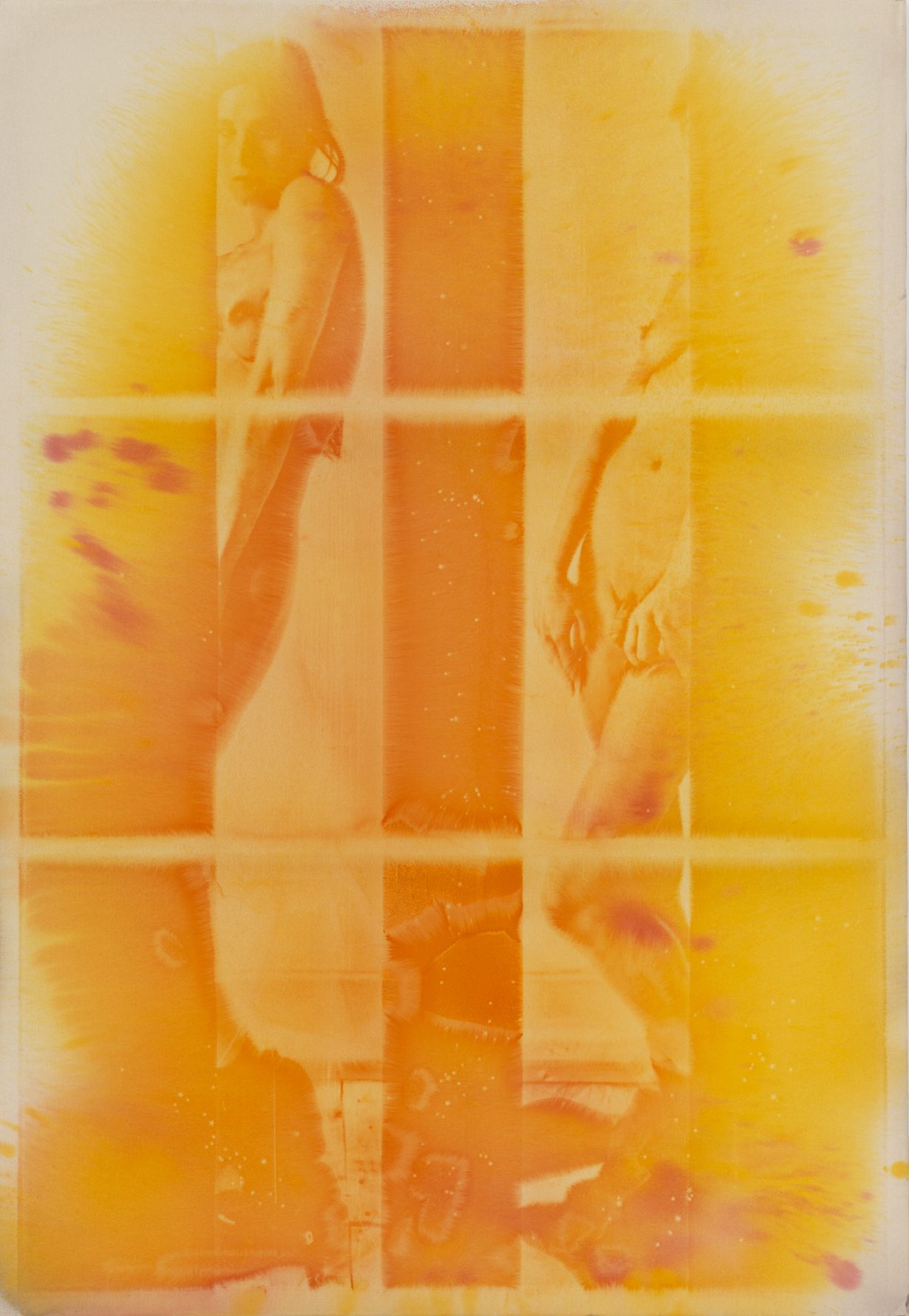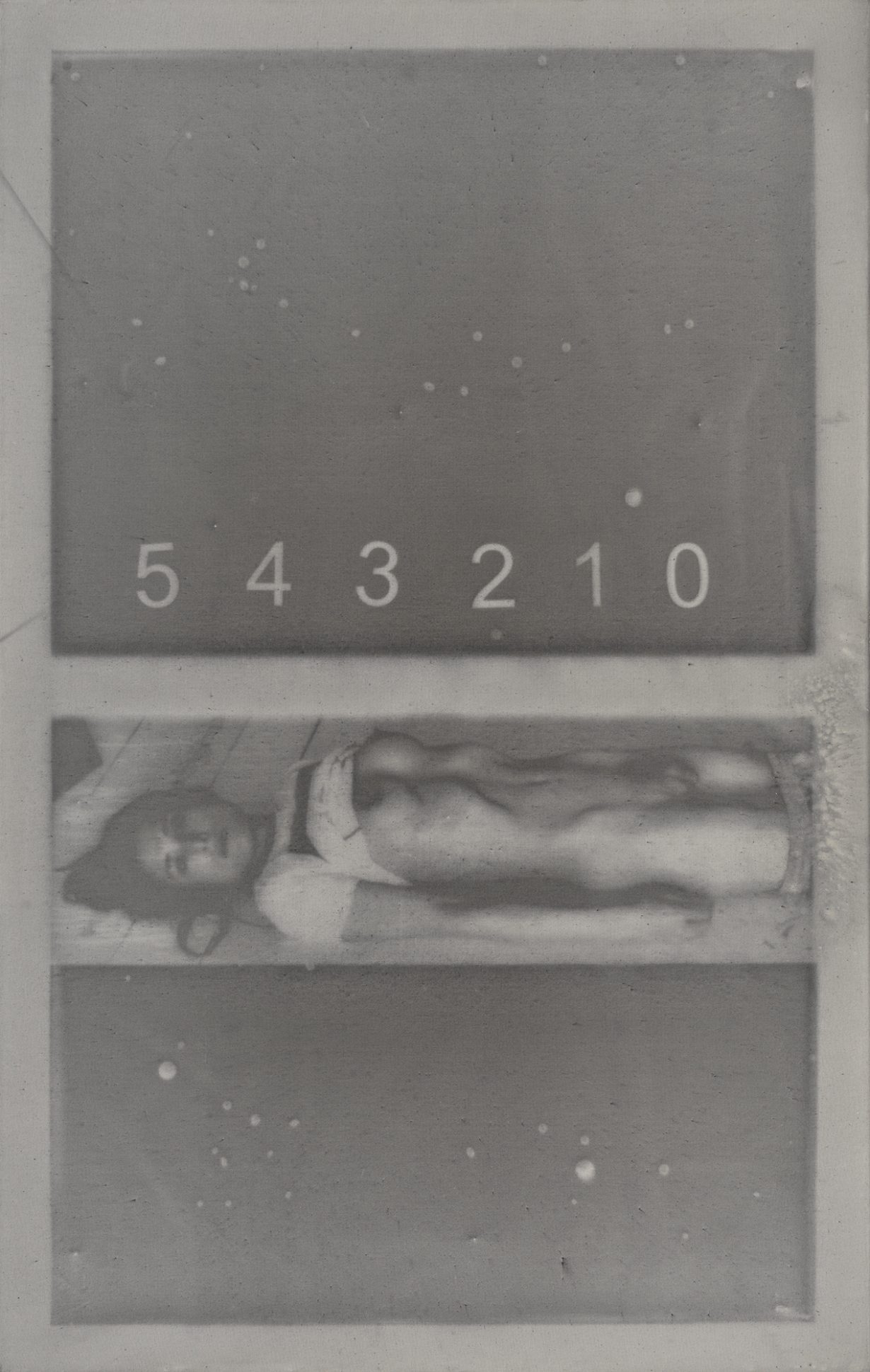Referencing Duchamp and Donatello, the Chinese-American artist’s self-portraits decode the gestures and refusals of the nude

Although this solo show of works by Chinese-American artist Ren Light Pan centres on nude self-portraits, it is marked less by a sense of exhibitionism than by an air of reticence. In many of her monumental ink portraits, Pan lifts a loose garment over her head, exposing her breasts and penis but obscuring her face. This occurs in Eight Search Results, Saint Sebastian (all works 2025), whose title refers to an early Christian martyr often depicted with his arms bound above his head, and in Three Standard Stoppages, whose title alludes to a 1913–14 work by Marcel Duchamp that plays at inventing a new and arbitrary unit of measurement. While Pan’s shrouded face and posture invoke a very twentieth-century kind of surrealist uncanny, given the US’s ongoing legal and existential attacks against transgender individuals, the action coupled with the show’s references to martyrdom and metrics calls up grimmer associations.
Apart from four columnal wooden sculptures, Pan’s works here are two-dimensional, on stretched canvas and muslin. On several of these surfaces are applications of Chinese ink and water that, following a period of exposure to infrared light, have come out looking like low-contrast daguerreotypes. The application of ink to stretched fabric produces a peculiar visual effect: the translucent grey wash bleeds through to the T-shaped stretcher bars such that these forms register on the fabric, crosses and verticals that then seem to veil Pan’s nude form. Her reticent figure lives behind the stretcher bars the way some of Georgia O’Keeffe’s sun-stained, moonlight-soaked New Mexico landscapes recede behind large Penitente crosses.

If Pan’s work produces artistic déjà vu, there are ample suggestions that this is intentional. In an untitled watercolour work on muslin, she poses like Donatello’s bronze sculpture David (c. 1440). In the tangy, yellow-toned Venus at Sunset, Dramatic Scrap, a rare work in which the artist’s face is prominent, Pan stands like a Graeco-Roman statue of the goddess of beauty, with her arms coyly appearing to shield but instead accentuating her nakedness. In Eight Search Results, Saint Sebastian, the artist is surrounded by variously stylised iterations of her own name; this work seems to signal her desire to inscribe herself into the annals of art history, one motivation, perhaps, for her to adopt the guises of icons of beauty and valour across the gender spectrum. The four sculptures in the show, made from thin, curled sheets of mahogany, cherry, maple and birch with more images of Pan inked on them and all titled Veneer, stand huddled in a corner of the gallery like castoff shells, residues of a process of continual self-creation.
Sequences of steely, sans-serif numerals scattered across Pan’s self-portraits prevent them from falling into the familiar sentiments of homage and revisionism. In Three Standard Stoppages, ten digits – unitless, à la Duchamp – run down the picture like height markers in a chilling mugshot. In Bathers, a surveilling eye assigns numbers to a row of ten Pans, some represented only by their upstretched hands. In From Five (no. 2), numbers descend from five to zero above the artist’s supine form, counting down to an end unknown. Confronted with Pan’s protruding ribs, sunken stomach and pelvic bones, one suspects that attempting to decode the gestures and refusals of the nude may be distracting us from other, more plainly evident revelations – about the violence of visibility and the arbitrariness of value – detonating in the space around it.
Nude and Number at Lyles & King, New York, 3 September – 4 October
From the October 2025 issue of ArtReview – get your copy.
Read next: The artist Eva Helene Pade reclaims the female muse